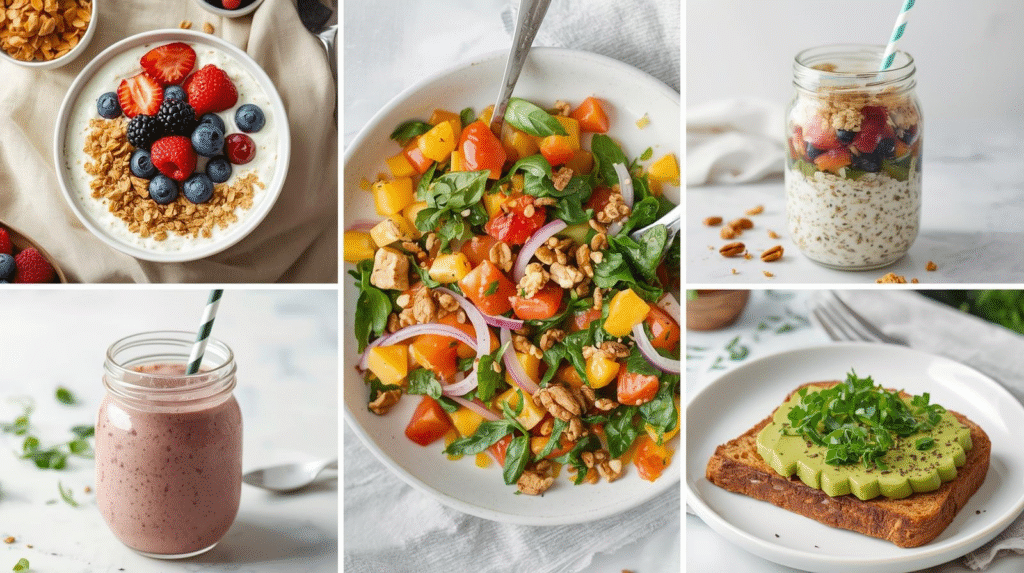Eating in a calorie deficit doesn’t mean starving yourself with boring breakfasts. Honestly, I used to think losing weight meant skipping meals or surviving on plain oats. Big mistake! Once I figured out how to create filling, tasty, and low-calorie breakfasts, everything changed. Not only did I start losing weight, but I actually enjoyed my mornings again.
If you’re like me and want to lose a little weight without giving up flavor, these 5 calorie deficit breakfast ideas will save you. They’re quick, easy, budget-friendly, and so delicious that you won’t even feel like you’re dieting.
Let’s dive right in—I promise you’ll want to try at least one of these tomorrow morning.
1. High-Protein Greek Yogurt Bowl
Greek yogurt bowls have become my go-to, and let me tell you, they’re game changers. I love how versatile they are. You can keep them sweet, tangy, or even savory if you’re adventurous.
Why it works for a calorie deficit:
- Protein-packed: Greek yogurt is high in protein, which keeps you full longer.
- Customizable: You can top it with fruits, nuts, or even granola in small amounts.
- Low calorie, high volume: A small bowl feels satisfying without blowing up your calorie budget.
How I make mine:
I take 1 cup of plain non-fat Greek yogurt (about 90 calories), add a handful of fresh strawberries, sprinkle in some chia seeds, and drizzle just a teaspoon of honey. The whole bowl is around 180–200 calories, and it feels like dessert for breakfast.
Pro tip: If you need more crunch, add a few crushed almonds—but measure them out. Nuts are healthy but calorie-dense, so a little goes a long way.
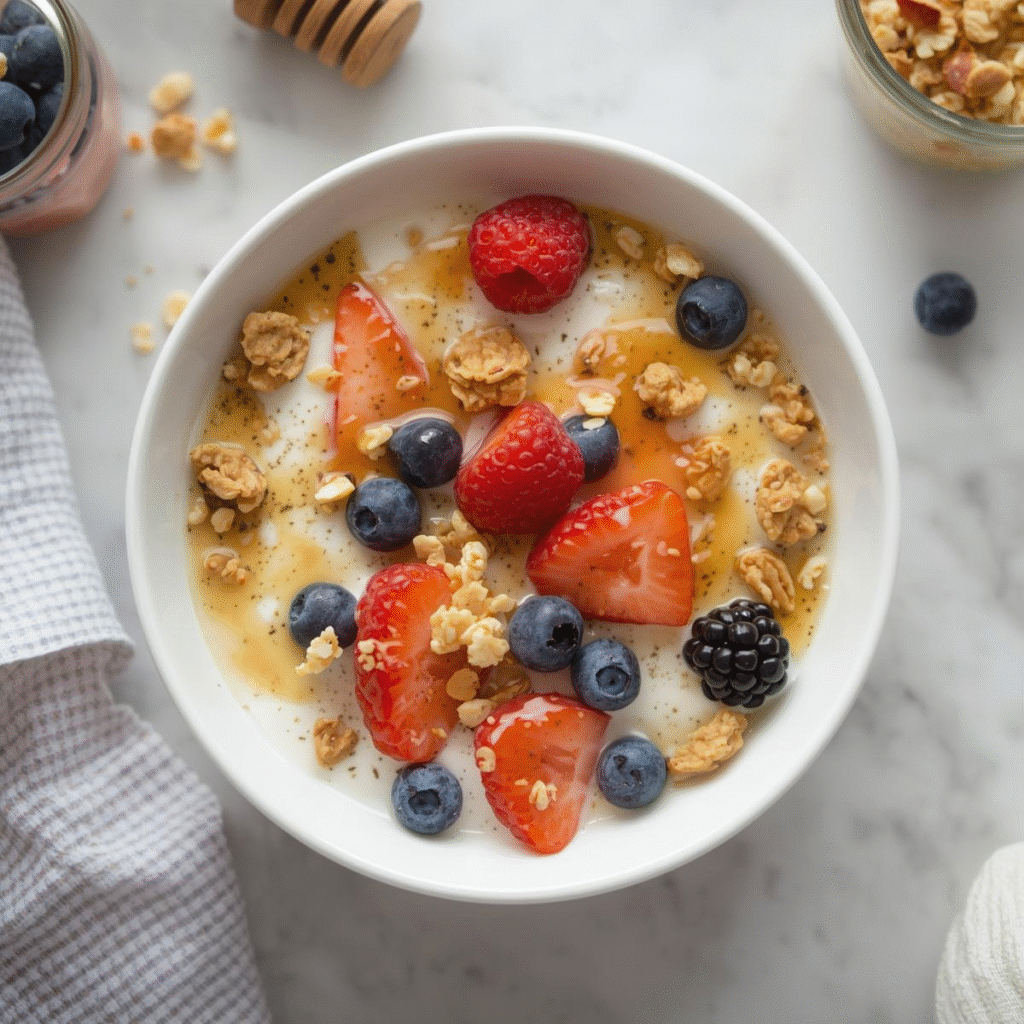
2. Veggie-Packed Egg Scramble
Egg scrambles are like that reliable best friend—always there when you need them. I make mine almost every other day because they’re so filling and you can throw in whatever veggies you have in the fridge.
Why it works for a calorie deficit:
- Eggs = protein and nutrients: A single egg has only about 70 calories.
- Vegetables add volume without too many calories.
- Endless variety: You can switch up the flavors daily.
My favorite combo:
I scramble 2 whole eggs with spinach, mushrooms, and bell peppers. To cut calories but still bulk it up, I add 2 extra egg whites. Season with salt, pepper, and a pinch of chili flakes—no heavy cheese needed.
The whole plate is under 250 calories, but it feels like a hearty diner-style breakfast. Sometimes I wrap the scramble in a low-calorie tortilla and boom, instant breakfast burrito.
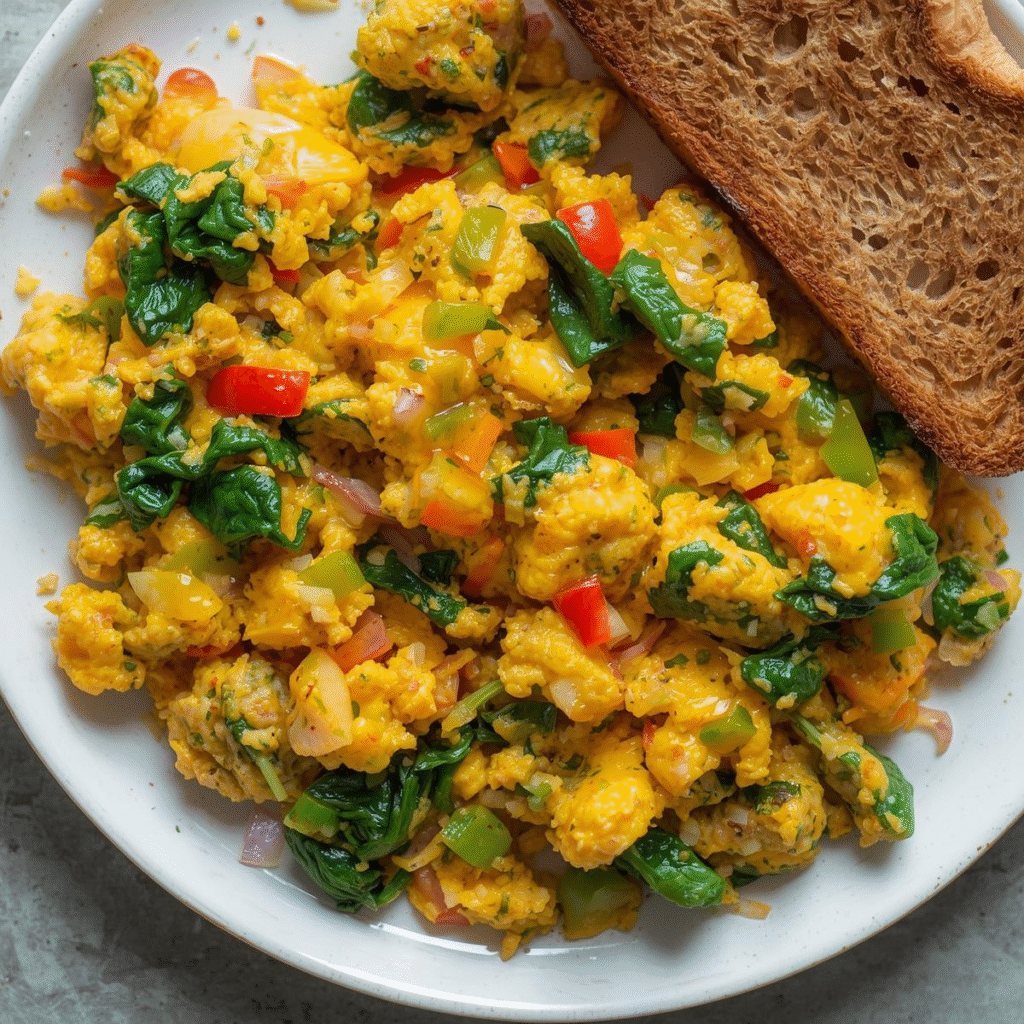
3. Overnight Oats with a Twist
I’ll be real—regular oats can get boring fast. But overnight oats? They’re magic. You prep them the night before, and in the morning, they’re creamy, flavorful, and ready to grab.
Why it works for a calorie deficit:
- Portion control is easy since you prep in jars.
- Fiber-rich oats keep you full for hours.
- You can make them taste like dessert (seriously).
My go-to recipe:
In a mason jar, I mix:
- ½ cup rolled oats
- ½ cup unsweetened almond milk
- 2 tablespoons Greek yogurt
- 1 teaspoon chia seeds
- A dash of cinnamon
Then I top it with half a banana (sliced) and a teaspoon of peanut butter. The whole thing comes out to about 300 calories, but it feels indulgent—like a peanut butter-banana pudding.
I swear, it’s like tricking your brain into eating dessert while still sticking to your calorie deficit.
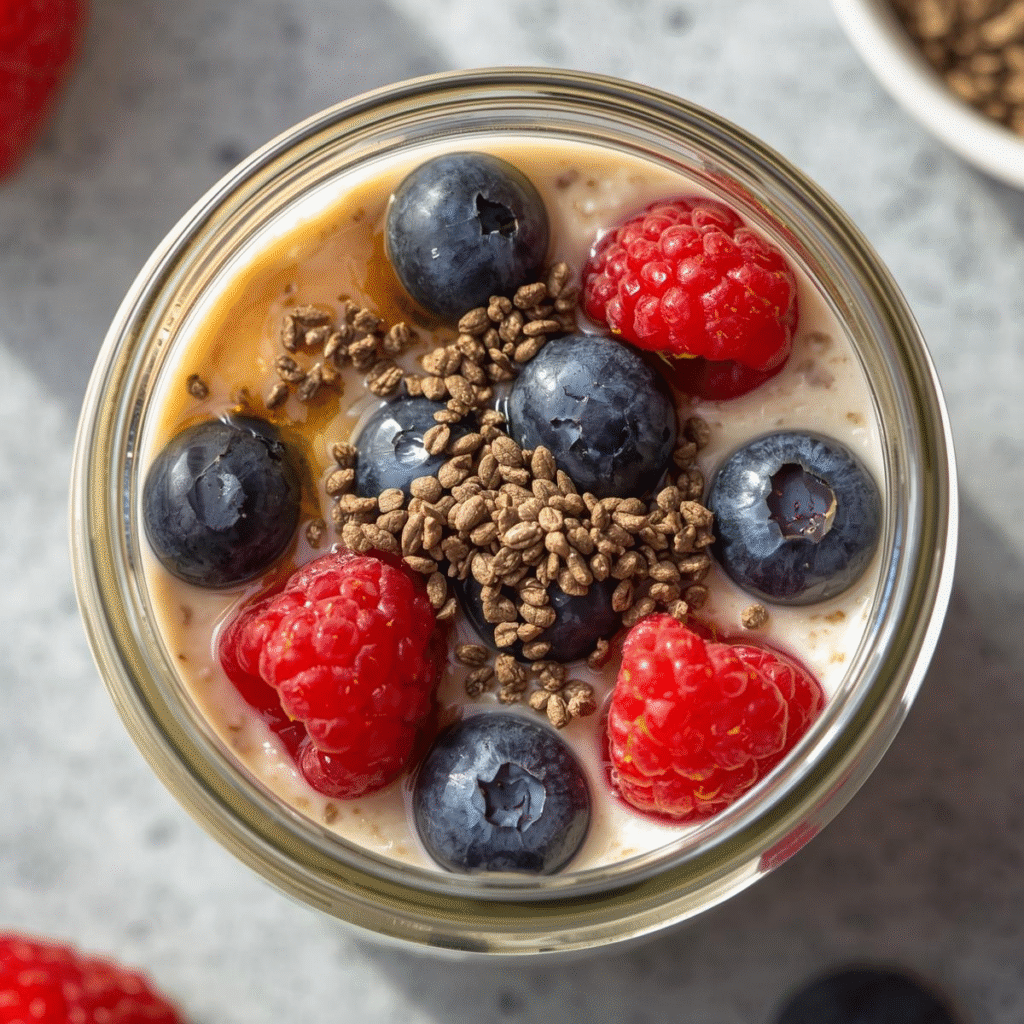
4. Smoothie That Actually Keeps You Full
Let’s be honest—most smoothies don’t keep you full. They taste good, but an hour later you’re hunting for snacks. That’s why I started making protein-based smoothies, and they changed the game for me.
Why it works for a calorie deficit:
- Protein powder boosts satiety.
- You can pack in leafy greens without even tasting them.
- Super quick—done in 5 minutes flat.
My favorite recipe:
- 1 scoop vanilla protein powder (100–120 calories)
- 1 frozen banana (90 calories)
- A handful of spinach (10 calories, you won’t taste it)
- ½ cup unsweetened almond milk (15 calories)
- 1 teaspoon peanut butter (30 calories)
Blend it all, and you’ve got a creamy, filling smoothie for about 250–270 calories. It feels like a milkshake but way healthier. Sometimes I add ice to make it thicker—almost like soft-serve ice cream.

5. Avocado Toast, the Smarter Way
I know what you’re thinking: “Avocado toast is old news.” But hear me out—it’s not about the trend, it’s about making it calorie-deficit friendly. I’ve figured out a way to enjoy it without racking up 600 calories.
Why it works for a calorie deficit:
- Healthy fats keep you satisfied.
- Easy to pair with eggs or veggies for more balance.
- You control the portions (that’s the secret).
My method:
Instead of loading a ton of avocado, I use just ⅓ of one (about 80 calories), mash it, and spread it on a slice of low-calorie whole-grain bread (70–80 calories). Then I top it with sliced tomato and a sprinkle of chili flakes.
For protein, I sometimes add a poached egg on top. Total: 200–250 calories, and it looks and feels like a fancy brunch dish.
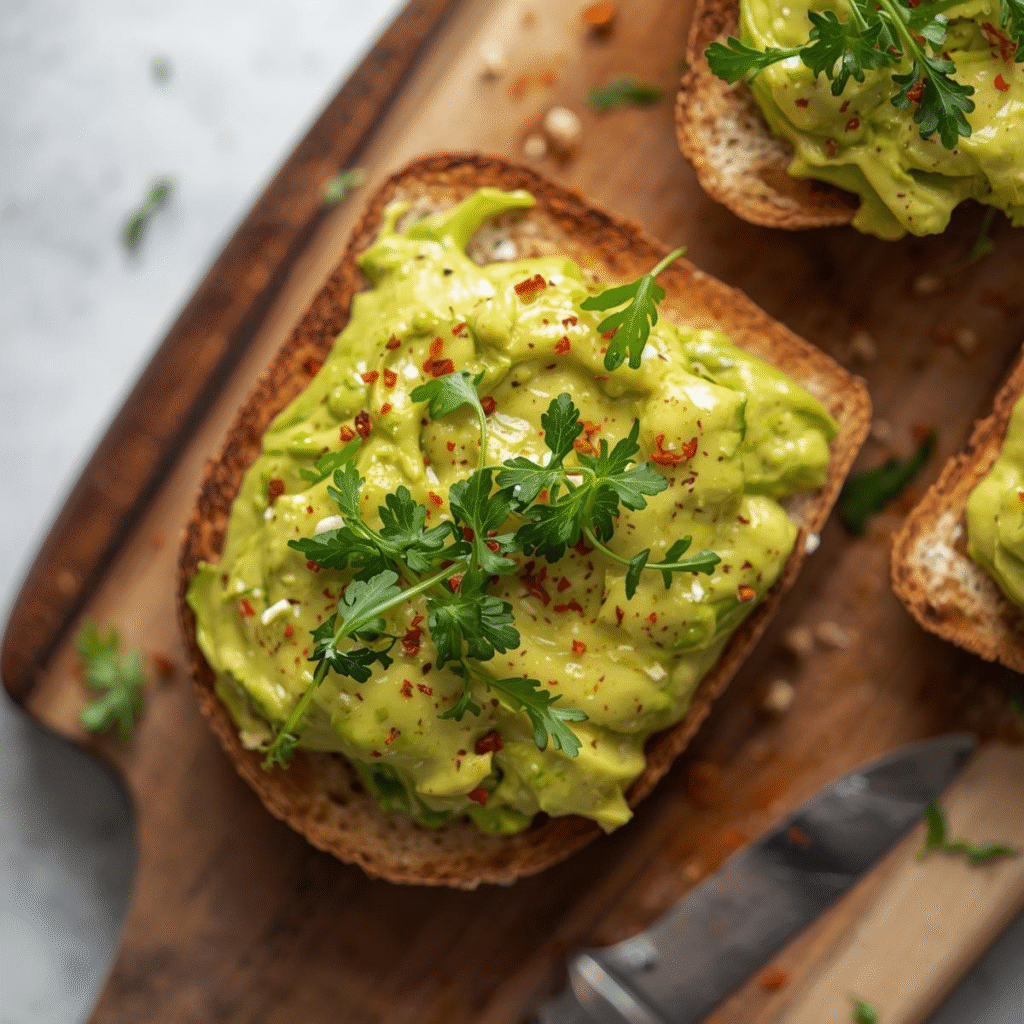
Why These Breakfasts Actually Work
Here’s the truth: calorie deficit is about consistency, not punishment. These breakfasts work because they balance protein, fiber, and volume, which means you won’t crash by 10 a.m. or binge at lunch.
According to a study by the Journal of Nutrition (2015), high-protein breakfasts reduce hunger hormones and keep people more satisfied throughout the day compared to high-carb breakfasts. That’s why loading up on protein-rich foods like Greek yogurt, eggs, and protein smoothies makes all the difference.
And the best part? You don’t feel deprived. These meals taste good, look good, and are easy to stick with long-term.
FAQs About Calorie Deficit Breakfasts
Can I skip breakfast if I’m in a calorie deficit?
Yes, you can if you practice intermittent fasting, but skipping breakfast isn’t necessary for weight loss. What matters most is your total calories for the day.
How many calories should a breakfast have in a calorie deficit?
It depends on your overall calorie goal, but most people find 200–350 calories for breakfast is a sweet spot when trying to lose weight.
Are smoothies good for calorie deficit?
Yes, but only if you include protein and fiber. Otherwise, you’ll be hungry soon after.
Is it okay to eat carbs for breakfast while in a calorie deficit?
Absolutely. Carbs are not the enemy. Just pair them with protein and fiber so you stay full longer.
Can I still eat pancakes or waffles in a calorie deficit?
Yes, but in moderation. Try protein pancakes made with oats and eggs—they’re lighter but still delicious.
Final Thoughts
Losing weight doesn’t have to mean cutting out flavor or skipping the most important meal of the day. These 5 calorie deficit breakfast ideas prove that you can enjoy food, stay full, and still hit your goals.
If you’ve been struggling with bland breakfasts or mid-morning hunger, try one of these tomorrow. Trust me—you’ll feel energized, satisfied, and a little proud of yourself for making a smart choice.
